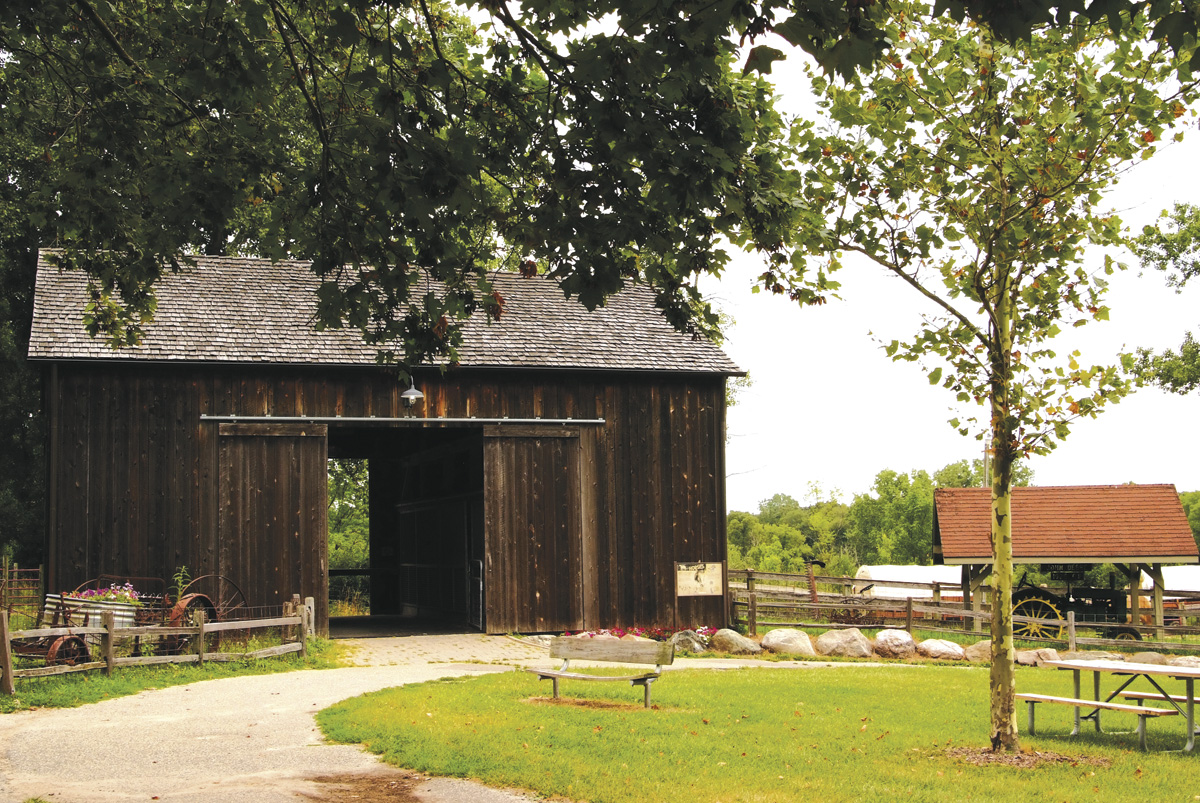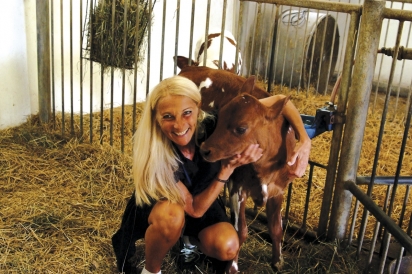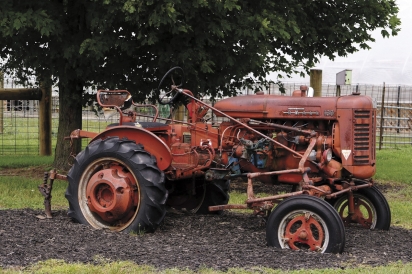Metroparks Give Visitors a Taste of the Farm
A short patch of dirt road leads to the farm center at Wolcott Mill Metropark in Macomb County. In contrast, a freeway exit takes you directly into Kensington Metropark in Oakland County, where the farm center is two miles off paved road into the sprawling park. The differences don’t end there, but one thing the parks have in common is their mission of presenting the farming life to visitors of all ages.
Wolcott Mill is home to a 250-acre working farm, complete with hayfields and a dairy operation featuring all six heritage breeds of dairy cow. Kensington’s farm is smaller and focuses on animals, beekeeping, maple sugaring and heritage skills like blacksmithing. Both parks offer farm camps, where kids can muck out stalls, gather eggs and experience what life was, is and may in the future be like on farms. Both place farm animals—goats, pigs, chickens, ducks, geese, miniature donkeys, cows, turkeys, horses and sheep—up close where they can be touched.
“Probably 50% of kids that come out have never had any interaction with farm life at all,” says Pat Bigelow, farm supervisor at Kensington. “I think there’s tremendous value in showing them where does their food come from and learning what it’s like to live on a farm.”
The lands now occupied by Wolcott Mill and Kensington have farms in their history. At Wolcott, the dairy barn and other buildings are original to the Wilson farm that was on the site long before it was a park. “When the Metroparks took it over, there was the remnant of a farmhouse,” says Park Manager Susan Schmidt. “The Metroparks kept as many of the original elements of the farm as they could.” Down the road is the actual Wolcott family mill, also part of the park, which operated from 1847 to 1967. “Farmers that grew grains all over this area would bring their grains here,” Schmidt says.
Under the direction of a full-time farmer, the Wolcott Farm Center operates a working dairy farm, whose milk is sold to a local milk cooperative. The fields produce hay, corn, straw and soybeans. “A lot of what we raise we use for feed,” Schmidt says. Wool is processed and made into batting and yarn.
On a warm summer day, youngsters attending farm camp stood around a cow in their matching blue shirts as morning milking was under way. “A lot of people don’t realize some of the heritage breeds are in danger of going extinct,” Schmidt says. “There’s reasons there were all these types of cows. That’s why we think it’s important to have all six breeds.”
At Kensington, the original farm was elsewhere on the property and the current location isn’t amenable to crops, says Interpretive Services Manager Jennifer Hollenbeck. “We’re primarily on the animal side,” she says. “The idea was not to replicate [Wolcott]. There’s different kinds of farms even today, so that was the story we wanted to tell.”
A barn built in 1856 was moved here from Milford and is home to six horses, including Percherons and Belgians. “Kids have grown up with this area being suburban,” Bigelow says. “It helps show this is what it was like before suburbs and shopping malls.”
Kensington’s year starts in March with maple sugaring from some 200 maple trees. Visitors learn how to identify trees and tap, collect and process the sap. Spring brings lambing season, sheep shearing and wool processing. In summer, farm camps put kids to work. “Every day the kids assist all the farm staff,” Bigelow says. “We always try to run activities linking kids with the history and where agriculture is going.” Four acres of pumpkins are ready in the fall, when visitors climb aboard horse-drawn wagons for a ride to the patch. After Halloween, things wind down, except for horse-drawn sleigh rides, weather permitting.
Sixty miles to the northeast, Wolcott’s activity “follows the agricultural scheme of things,” Schmidt says. “We’re kind of a nontraditional Metropark; spring and fall are our busiest times of year.”
Perhaps hinting at the future of agriculture, Wolcott has a greenhouse where vegetables are grown hydroponically. Tomato vines, growing on strings, stretch eight feet tall. Strawberries are planted overhead and chard grows in ordinary plastic bins. There is also an outdoor, raised-bed vegetable garden. The greenhouse is an example of the important role volunteers play in both parks’ operations. The shell was donated; the piping was installed by a 4-H group led by Faye Cerku of Shelby Township. “It took us eight months,” she says.
It’s no secret that farms are disappearing from southeast Michigan as development spreads further and further outward. According to the most recent USDA survey of farmland, taken in 2012, Macomb County had just 502 farms, with an average size of 135 acres. That’s down from 2,345 farms in 1950, according to the county. Oakland County had 537 farms, average size just 59 acres, with less than half as much land under cultivation as Macomb.
“One of the former commissioners who really championed this becoming a Metropark really thought it was important, because of the growing development of Macomb County, that we preserve that heritage, that we could show future generations where we’ve been, where we are and where we’re going,” Schmidt says.
Learn more at Metroparks








